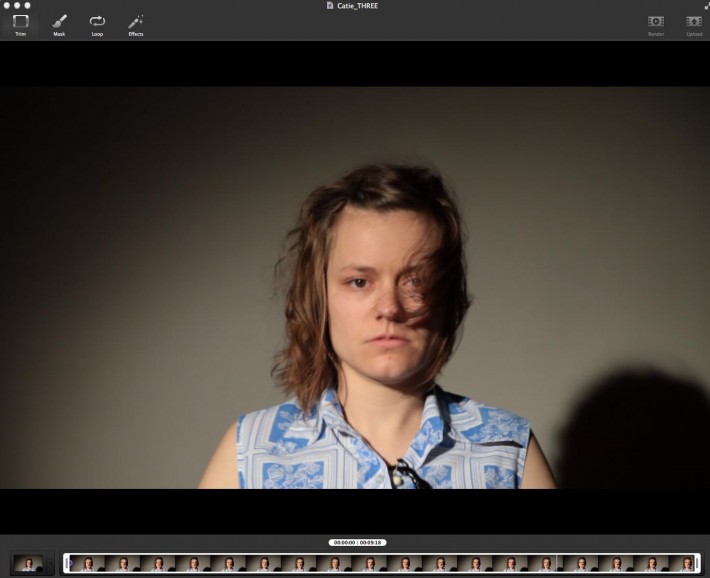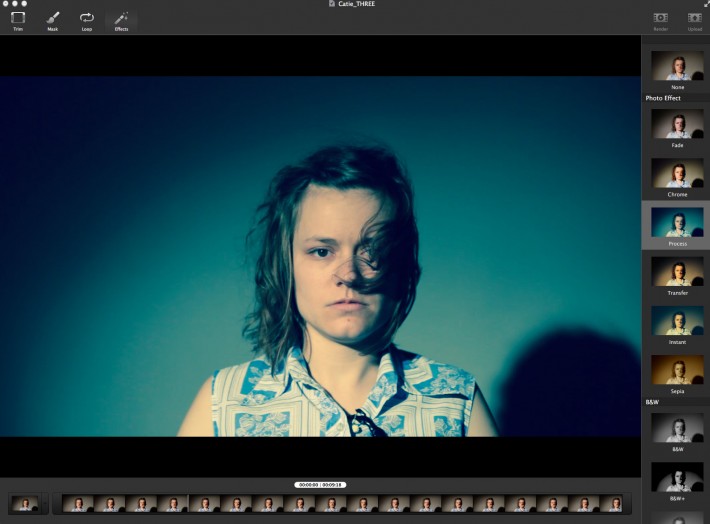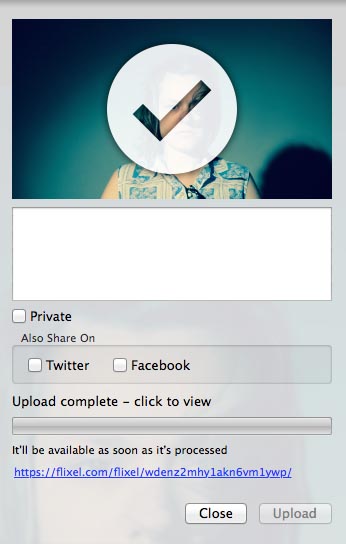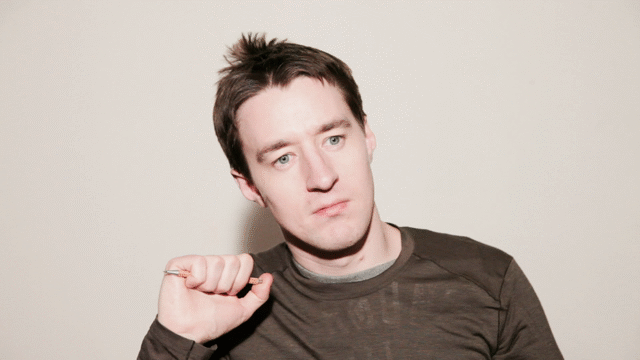Recently I had an opportunity to try my hand at creating the new hotness in cyberspace, Flixel Photos Inc.’s Cinemagraph Pro for Mac, what they are calling a living photo creation software. Cinemagraph Pro allows users to easily create Cinemagraph images, a media form that combines elements of a moving video to a high quality still photograph or referred to as 'hybrid photography.' In February, Flixel released a professional version of the app for Mac with upgraded features previously only available for the iPhone, iPad, and iPod Touch.
The software itself is very simple, raw, and young. It provides a very appealing platform for creatives interested in something new and exciting, but like most first generation software it still has some minor issues.
Features
Support for UHD (4K) resolution video output
Masking tools
Seamless looping options
Color/BW Filters
Offers the option to upload high resolution cinemagraphs directly to Flixel's site as well as Twitter and Facebook.
The Flixel uploads also provide an embed code so living photos can be placed onto websites and blogs.
Before beginning my week long escapade into the Cinemagraph Pro software I read what the App offered users: "An intuitive interface enables swift navigation amongst a full suite of editing modes and with just a few clicks; your living photos are shared with the world. It's never been easier to create beautiful professional grade Cinemagraph images. Intuitive Creation. Fast Results."
I was really curious to test out the interface of the software. I first approached Cinemagraph Pro without visiting their tutorial in an effort to test how intuitive the software really is. The layout is incredibly simple and as someone who's accustomed to using Adobe Creative Suite, I found myself over-analyzing what I was suppose to do. After a few minutes I understood the program and began creating a basic workflow. Flixel boasts that it's intuitive and fast, and I agree: it is.
Once I was familiar with the software, I could create interesting Cinemagraphs in under ten minutes.
Program Walk-Through
You begin by uploading video into Cinemagraph Pro by creating a new document:

The video file opens. Pretty simple, pretty easy, on the top left you've got the Trim tool (video editing tool), Mask tool (to determine what area to keep in motion), the Loop tool (have your Flixel repeat), and the Effects tool (color filters)

I brought my trimmed section into effects and chose an effect called Process, on the right you can see some of the color filters provided.

After choosing my effect I masked the area of video I wanted to remain in motion.

Once I had my completed Flixel I had the option to directly upload to the Flixel site or generate a .gif. I had been experiencing compression issues when exporting .gifs, and then trying to re-upload and embed them for this article, so I chose to directly upload to the Flixel site.

Here is what the finished product looks like:

Render Issues Explained
I found myself having difficulties when it came to rendering/uploading my living pictures. The software provides two options when rendering your Flixels either upload them straight to the Flixel community site or directly to your computer as a .gif or .mp4 file at 1080, 960 or 720 resolution. What I encountered was serious compression issues when I saved the gifs to my desktop. Occasionally a 1080 .gif would have gradient banding and sometimes it wouldn't. When I did have a batch of decent looking .gifs, I would upload them into imgur.com to see how they would hold up, and often times they would look worse. I tried experimenting with different resolutions sizes and I would usually be confronted with serious compression issues. In an effort to get the .gifs web-ready for this review, I started directly uploading my Flixels onto the Flixel community site. With this method, the .gifs looked great: high quality, no gradient banding, practically perfect.The only downside was I couldn't pick what resolution size the .gifs uploaded.
After prepping this article and having work around the compression and banding problems I realized that my ability to control the output of my Flixels was really limited.
Flixel Comparisons:
These were Flixels I shote for and created. The first two were exported at their largest resolution and uploaded through Imgur. The last three were directly uploaded to the Flixel community site and embedded into the article.



I'm really excited to see the capabilities of this software in a year or two, but presently I feel the software is in it's very early stages with some kinks to work out. It's definitely a fun tool for creative professionals or companies looking for new ways and unique ways to market to their customers.
What I liked
- Speed and usability
As you can tell from the walk-through above, this program could be used by almost anyone with basic computer skills. It's quick, easy, and straightforward.
- Zoom Feature
The Zoom feature wasn't mentioned in the walk-through because it's a keyboard command, but an especially useful one when making selections for masking. The program (similar to Photoshop) allows you to zoom into the video (Command +) while creating a mask. I came across this on accident and was very impressed that it was a command built into the program.
- Masking Tool
The Masking tool is what makes this program so incredible. Not only can you mask an area of video and determine whether or not it will stay in motion, you can change the size and opacity to refine your selection.
- Effects
The effects are a nice additional feature of the software. There's an array of color, black and white, and mixed color and black and white options.
What Could Use Improvement
- Rendering capabilities
- .gif gradient banding
- .mov file exporting issues
Questions
Before I walk away from this article, I really want to know how people feel about this 'hybrid photography' movement with Cinemagraphs. There are lots of photographers and companies trying to push the envelope and explore new and interesting ways to creatively express themselves. Are Cinemgraphs going to have a place in online portfolios and galleries? Are companies going to work with photographers to create Flixels? What are your thoughts?









I really don't see how this is worth 80$ to anyone with Photoshop (even less if you have the full CC suite), am I missing something?
As for cinemagraph, I think they have their place and are interesting. Apart from popularity on Tumblr and Reddit, I think they could really have their place in long form blogging platforms that are gaining popularity like Medium and Svbtle. They could also tie in nicely with long form tablet news apps too.
They had a few of these going on big screens at WPPI at their booth. Hung like wall art. It looked pretty amazing in that format.
Yeah, must be impressive on large screens too. They could be cool as screen savers on something like the Apple TV. There could also be a place for something like this on big corporate displays you sometimes find in office spaces and malls. They could even nicely overlay useful information on top.
Oh and the cost of the product is likely linked to the ability to export these things into HD and 4K.
The iOS version is under 30 bucks and can be exported in HD. There are also free versions. Anyone interested in trying this out should definitely try out the free versions first.
I liked the high-rez version of this one - https://flixel.com/flixel/3hz1ajdgw6dewoce31d1
Some people are easily entertained...
Will there be a windows version?
There are free iOS versions. Full iOS versions are under 30 bucks. There are also podcasts on how to do these using Photoshop CS6. Sorry but I don't know if they have Android or Windows versions.
Microsoft has a free app to do it called Cliplets. It is here: http://research.microsoft.com/en-us/um/redmond/projects/blink/
Don't know about the exporting capability. Nokia offers a free cinemagraph app for windows phone 8 or above as well.
People have been making these for years. I've been seeing fewer of them lately and thought it was on the downside of a trend. I've always thought they were a pretty cool. I have a short list of these to shoot and use PS CC to create them.
Everyone is taking pictures and the surest way of catching attention is to do it differently. The traditional way has been to try out different angles or to process it differently. Cinemagraphs and GIFs are just an evolution of the art. These forms won't replace photography or video in the same way that we still have paintings and sculptures. They will just find their niche. Art is art and it's up to the artist and his audience to appreciate it. The rest can hate or ignore as they choose.
Flixel offers the option to embed high quality versions that are not GIFs by posting to Flixel.com and using the embed code (on be bottom right of the page).
With all due respect, when I buy a pro software upgrade, I'm wanting maximum control from the product, not embedded links. Please improve the rendering capabilities to the level we would expect from a program with "Pro" in the title.
Galaxy S4 do the same -.-
With the free version you do not own the cinemagraph you create. It is uploaded on their site. Anyway, I see a lot of grey marketing strategies, I don't trust them. I'm sure soon there will be many alternatives on the market.
Very informative. i just wanna ask, How can I embed my own Cinemagraph to my website that doesn't link to Flixel.com or to its source like yours... thank's in advance.
Great post. Also, there is a Photoshop action that makes this very quickly directly IN Photoshop -http://scarab13.com/cinemagraph-photoshop-action/